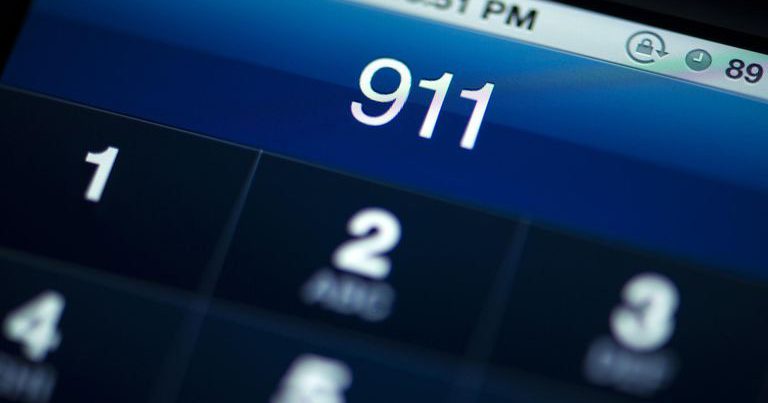In the shadow of Toronto’s skyline, a troubling trend has become cause for concern. More than half of all calls to the city’s 9-1-1 emergency line aren’t actually emergencies at all.
“Last month, a caller dialed 9-1-1 because they couldn’t find their glasses,” reveals Sandra Burton, Toronto’s Emergency Services Director. “Another wanted to report a neighbour’s loud music. These aren’t life-threatening situations, but they tie up resources meant for people who genuinely need immediate help.”
This growing pattern has prompted the launch of the “Who to Call” education campaign, unveiled yesterday at City Hall. The initiative aims to address what officials describe as a dangerous misunderstanding of when to use emergency services.
According to data released by Toronto Police Services, approximately 58% of the 1.9 million calls received by 9-1-1 operators last year didn’t qualify as actual emergencies. That’s over a million calls that potentially delayed response times for heart attacks, violent crimes, and house fires.
“Every non-emergency call can delay our response to someone fighting for their life,” explains Paramedic Chief Darren McLeod. “Sometimes those minutes or even seconds make all the difference.”
The campaign introduces a straightforward guideline: 9-1-1 is exclusively for situations where someone’s safety, health, or property is in immediate danger. For everything else, residents should use alternative services like 3-1-1 for city information and services, or 2-1-1 for community resource connections.
What’s particularly concerning to officials is that misuse isn’t limited to confusion about which number to call. Some callers use the emergency line for deliberately trivial matters.
“We’ve had people call because their fast food order was wrong,” says 9-1-1 operator Jasmine Singh, who’s worked the emergency lines for eight years. “One caller was upset because a store wouldn’t take back a purchase without a receipt. These aren’t just non-emergencies – they’re complete misuses of a critical service.”
The campaign will feature advertisements on public transit, social media, and local radio stations. Posters will provide clear examples of what constitutes an emergency versus situations better handled by other services. The materials are being produced in 14 languages to reach Toronto’s diverse population.
City Councillor Maria Vasquez, who represents a downtown ward with high call volumes, emphasizes that the issue crosses all demographic lines. “This isn’t just one neighbourhood or one age group. We’re seeing misuse from teens calling about Wi-Fi outages to seniors calling for weather updates.”
The financial impact is substantial as well. Each unnecessary call costs taxpayers approximately $35 in dispatching resources, according to budget documents released during the campaign announcement. That translates to roughly $35 million annually spent on non-emergency calls.
But perhaps more striking is the human cost. For every inappropriate call, emergency response teams are diverted from potential life-saving situations.
“I’ve been in this profession for twenty-two years,” says veteran paramedic Joaquin Ramirez. “Nothing is more heartbreaking than arriving at a genuine emergency knowing we could have been there sooner if not for responding to non-emergency calls first.”
The campaign also addresses another key issue – pocket dials. Cell phones with emergency call features have led to thousands of accidental calls, each requiring operator verification to ensure no one is actually in danger.
“We can’t just hang up,” explains 9-1-1 supervisor Kelly O’Neil. “We have to treat every call as potentially legitimate until proven otherwise. That means staying on the line, calling back disconnected numbers, and sometimes even dispatching officers to verify safety.”
The city has partnered with community organizations like the Toronto Community Housing Corporation and the Toronto District School Board to spread awareness in neighbourhoods with historically high rates of 9-1-1 misuse.
“Education is key,” says principal Aisha Johnson of Parkdale Public School. “We’re introducing age-appropriate lessons about emergency services starting in grade three. Children need to understand what constitutes a real emergency.”
While the campaign focuses primarily on education, officials note that deliberate misuse of emergency services can result in fines under provincial legislation. However, enforcement remains a last resort, with the emphasis placed firmly on helping residents understand proper use.
“We’re not looking to punish people,” Mayor David Chen clarified during the campaign launch. “We want to educate. Most inappropriate calls come from a place of confusion, not malice.”
Some community advocates have suggested the issue highlights gaps in city services. Teresa Gomez from the East End Community Association points out that many residents turn to 9-1-1 when they can’t navigate other systems. “If someone can’t get through on other city lines, or doesn’t understand which department handles their problem, they often default to the one number everyone knows.”
As the campaign rolls out across Toronto neighbourhoods, emergency service workers remain hopeful that public awareness will reduce unnecessary calls and help them focus on true emergencies.
“At the end of the day, this campaign isn’t about numbers or efficiency,” concludes Fire Chief Raymond Johnson. “It’s about making sure that when you or your loved one is in real danger, help arrives as quickly as possible. That’s something every Torontonian can get behind.”






